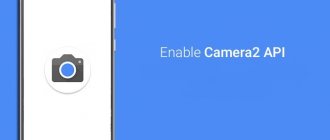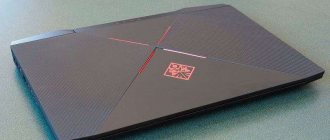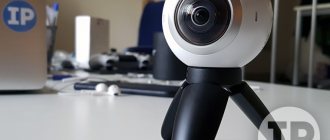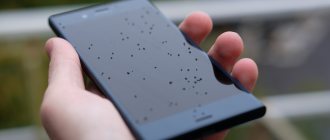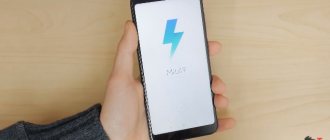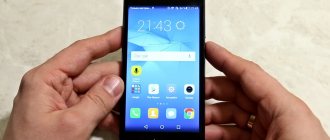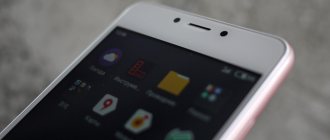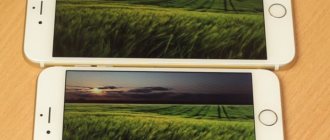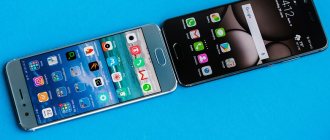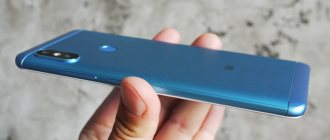Technical characteristics of Huawei P30 Pro (index VOG-L29)
| Characteristic | Description |
| Case materials: | Aluminum, glass |
| Operating system: | Android 9 Pie, custom shell EMUI 9.1 |
| Screen: | diagonal 6.49 inches, OLED, resolution 1080×2340 pixels (398 ppi), ratio 19.5:9, recognition of up to 10 touches, protective glass with 2.5D effect, automatic brightness adjustment |
| CPU: | 8-core HiSilicon Kirin 980 (2 cores Cortex-A76 2.6 GHz + 2 cores Cortex-A76 1.92 GHz + 4 cores Cortex-A55 1.58 GHz) 7 nm |
| GPU: | Mali-G76 MP10 |
| RAM: | 8 GB |
| Flash memory: | 256 GB, NM memory card up to 256 GB |
| SIM card type: | two nanoSIM |
| Mobile connection: | 2G 850, 900, 1800, 1900 MHz, 3G 850, 900, 1900, 2100 MHz, LTE Cat 13, 400 Mbit/s; LTE TD-LTE: 34, 38, 39, 40. LTE FDD: 1 - 9, 12, 17 - 20, 26, 28, 32 |
| Communications: | Dual-band Wi-Fi 802.11 ac/b/g/n (2.4 GHz; 5 GHz) 4x4 MIMO, Bluetooth 5.0, BLE, aptX and aptX HD, LDAC HD, HWA Audio, USB Type C connector for charging/syncing, NFC , infrared port |
| Navigation: | GPS, AGPS, GLONASS, BEIDOU |
| Sensors: | G-sensor, light sensor, proximity sensor, in-display fingerprint scanner, Hall sensor, gyroscope, compass, color temperature sensor, face recognition |
| Main camera: | 40 MP (color, optical stabilization, f/1.6, matrix size 1/1.7 inches), 20 MP (wide-angle, f/2.2), 8 MP (telephoto, 5X optical zoom and 10X hybrid zoom, optical stabilization, f/ 3.4), ToF (time of flight) optical stabilization supports laser autofocus, phase detection and contrast autofocus, AIS - (Huawei AI image stabilization), 4K video recording |
| Front-camera: | 32 MP (without stabilization, 26 mm, f/2.0, wide angle) |
| Battery: | Non-removable, lithium-polymer 4200 mAh, fast charging Huawei SuperCharge 2 at 40 W - 70% in 30 minutes |
| Dimensions, weight: | 158×73.4×8.4 mm, 192 g |
| Housing protection: | against dust and splashes according to class IP68 |
| Case colors: | Light blue, blue (“northern lights”) |
Dual Leica camera with multiple modes
Two Leica cameras are the main pride of the Chinese. One of the cameras works as a regular 12-megapixel RGB color sensor, while the second shoots only in black and white mode. But after the cameras fire synchronously, the resulting result is processed together to produce a single image with maximum contrast and clarity. According to Huawei, the pictures are three times brighter and 50% more contrasty than usual.
The dual module is based on two identical Sony IMX286 CMOS sensors with a pixel size of 1.25 microns, a crop factor of about 6.75x, and an effective resolution of 11.81 megapixels (3968 x 2976 pixels). Both SUMMARIT-H 1:22/27 ASPH optical systems from Leica are also identical, with a fixed focal length of 4 mm (27 mm in 35 mm equivalent) and an f/2.2 aperture (up to f/16). There is laser autofocus for instant and accurate focusing, but there is no optical stabilization system (OIS) in the smartphone. The latter, according to the company’s idea, is compensated by the second camera.
Optics for Huawei smartphones are produced by Chinese OEM contractor Sunny Optical Technology under license from Leica - just like most lenses for compact cameras. Leica is still responsible for the quality of the lenses and their alignment, but the process is noticeably cheaper.
The feature of Leica cameras is black and white photography modes. Here Huawei P9 Plus provides complete carte blanche for creativity; some frames, especially overexposed ones, are simply indistinguishable from experiments with real film.
In manual (Pro) mode, Huawei P9 and P9 Plus smartphones allow you to configure all the parameters yourself, and even choose to shoot in RAW format. An interesting possibility is refocusing already in the shot frame, changing the depth of field of the image. True, many other smartphones can do this, even with one camera - Lumia 950, HTC 10 and others.
The HDR mode works well, especially against the backdrop of a bright summer sky, when neither manual nor automatic settings can help. Without HDR, you will certainly end up with either a “knocked out” sky or a lack of halftones in the shadows. Here is an example of panorama shooting, the stitching works well.
Unfortunately, the P9 Plus's video capabilities are limited to Full HD quality (1920 x 1080). Shooting with the main dual camera shows quite acceptable results in good lighting and above average in twilight or weak artificial light. Fans of experiments will like the slow-motion and interval shooting modes. In a word, YouTube is suitable for cats, but filming a business presentation in a darkened audience, especially hand-held, will not be easy.
Experimenting with Leica film effects is great. But in normal modes, the camera is at the level of competitors who do not have such a brand behind them.
22
PHOTOS
Huawei EMUI 5.0 camera app review
As promised, I continue the series of materials about the capabilities of Huawei Mate 9. This review will focus on the proprietary Huawei camera application based on the EMUI 5.0 shell.
The camera in Huawei flagships can be called the pride of the company. It is there that it is most noticeable how much effort and man-hours have been invested in the convenient use of cameras in Huawei smartphones. The application is really high quality and easy to use. This doesn’t happen often even with A-brands.
The review of the Huawei camera application (EMUI 5.0) was created using the example of Huawei Mate 9, but the material will be relevant for the company’s premium smartphones - Mate 9 Pro, Huawei P9, P9 Plus, Mate 8, Honor 8 (partially), as well as the new Huawei P10 and P10 Plus.
Leica quality
A desirable camera for photographers in the form of a smartphone, how is this an option? Leica is not only a cool name for hipsters, but also a company with a rich, solid history. Huawei P9 flaunts a dual lens system. 2 12 megapixel sensors work in pairs, but one takes color images, and the other takes black and white. The optics were produced by the Chinese company Sunny Optical Technology under license from Leica itself, everything is serious. The settings menu is reminiscent of the original Leica cameras in a proprietary font, suddenly you had to hold these in your hands.
The smartphone takes excellent pictures on automatic during the day, but you can change the parameters manually, playing with shutter speed, aperture, focus and other settings if you want. The P9's focus is sophisticated: it changes the depth of field, and laser and contrast focusing also work. Games with depth of field have appeared a long time ago, but they are not found in every smartphone.
Is this feature necessary? If you want to feel like a creative person, you should definitely try it, the effects are interesting. [twenty20 img1=»13629" img2=»13628" offset=»0.5"] They also added the RAW format, it is valued by professionals, it allows you to process pictures without loss of quality. I don’t understand why this is needed on the phone and who will subsequently “pulls out” the picture on computers, but if you really want to, then go ahead.
You should definitely try the films, there are only 3 of them, including the standard one. If you use “bright”, the pictures come out more saturated and juicy, the picture is attractive to the eye. They didn’t forget about the built-in additional effects, a kind of simplified Instagram. If you add HDR to the film, then shooting in the evening turns into a game: sometimes the pictures are simply beautiful, sometimes they frighten with unnatural results.
HDR against the sun Orange sunset with HDR Night mode and HDR Simply beautiful Fence stretching into the distance Bright colors, good detail What rich colors Classics of the Huawei genre shot on Huawei
I didn’t like the quality of the pictures in low light; I thought the pictures would be better at night. Apparently, few people can compete with the Galaxy S7 on an equal footing. Although Huawei P9 has as many as 4 profiles for shooting at long exposures at night. But all of them are adapted for a tripod or very strong professional hands, otherwise the frames will be blurry. It’s a pity that they decided to make the body thinner and didn’t add optical stabilization; I think then the P9 would have taken photographs at the same level as the S7, otherwise the difference is too obvious.
Photo of food Saturday morning Excellent macro Stole the bow Beauty Deer! Waka-waka Pompous Old motorcycle Cars Alley Ponds Flowers Even more flowers At sunset And again macro flowers Walking bike Like with an idea
And a few words about the front camera. It is 8 megapixels, traditionally wide-angle and with an effective skin-blurring function. By moving the slider while shooting, we change the strength of this technique so as not to turn into a porcelain dummy.
The smartphone cannot record video in 4K; it records videos in 1920×1080 at a speed of 30 or 60 fps, and additionally shoots timelapses or, conversely, slow-motion videos.
So is the camera on fire or not? It's very good, but it lacks a few things to be perfect. We need faster optics, optical stabilization and faster autofocus. During the day the pictures are very good, but the flagship should take cool photos in any lighting. The Samsung Galaxy S7 proved this to us; it’s really cool. But remember that P9 has his own secret weapon. At night, you can shoot in black and white, focusing on beauty and the plot, thus leveling out the shortcomings. Well, if you use a tripod and ready-made profiles, then the color results will be very good.
Huawei P9 and P9 Plus: Chinese flagships with Leica cameras
It has become a tradition for Chinese Huawei to hold premieres of its flagship smartphones in London. The P9 series was no exception to this rule - its presentation took place in the British capital in the Battersea Evolution hall. When we wrote “series,” we were not mistaken, since two models were presented at the event: the basic one with a 5.2” IPS screen and the 5.5” P9 Plus, equipped with a Super AMOLED display. In this case, the resolution of both matrices is 1920 × 1080 pixels.
If you put Huawei P9 and iPhone 6s side by side, then, despite the difference in the diagonal of their displays of 0.5 inches, their dimensions will be similar. This is achieved due to the much thinner side frames of the “Chinese” - their width is only 1.7 mm versus 4.29 for Apple’s brainchild. The body of the P9 is made of aluminum and has a thickness of 6.95 mm.
The design of the model reflects the features of the Nexus 6P released last year, which was also developed by Huawei. This is especially true for the area where the camera is located, although the camera itself is different here - it has two 12-megapixel modules certified by the German company Leica. One of them shoots in color, the other takes black and white footage. Working in sync, they allow you to achieve more detailed photos in good lighting and reduce noise in the dark. At the same time, the maximum aperture value is f/2.2, and hybrid laser autofocus takes into account data on contrast and depth in its work (Huawei P9, as the manufacturer claims, is the world's first smartphone with a separate depth processor).
The hardware basis of the Huawei P9 is an eight-core Kirin 955 chip containing two quad-core clusters - a productive 2.5 GHz Cortex-A72 and an energy-efficient 1.8 GHz Cortex-A53. In terms of memory, the model, as is now fashionable, is presented in two versions - 3 GB of RAM is combined with a 32 GB drive, and 4 GB of RAM is offered only in the version with 64 GB of data storage.
Among other specifications of the Huawei P9, we note a front 8-megapixel camera, a 3000 mAh battery, a USB Type-C port, an infrared transmitter, the presence of stereo speakers and a fingerprint scanner on the rear panel, as well as the Android 6.0 Marshmallow operating system with the proprietary EMUI 4.1 interface .
As for Huawei P9 Plus, in terms of processor, cameras and a number of other parameters, such as a fingerprint sensor, audio subsystem and others, it is no different from its younger brother. But still, this is a more “advanced” device, since in it the developers exclusively (in relation to the P9) implemented the Press Touch technology for recognizing the force of pressing the touch screen, which is an analogue of the 3D Touch of the Apple iPhone 6s, and also endowed it with a fast charging function. In addition, the P9 Plus will only be available in a version with 4 GB of RAM and 64 GB of flash memory, and its battery capacity has been increased to 3400 mAh.
By the way, Huawei P9 will go on sale on April 16 in 29 countries in Europe and the Middle East in six colors - Ceramic White, Haze Gold, Rose Gold, Titanium Grey, Mystic Silver and Prestige Gold. Its 32 GB version is priced at €600, and the version with 64 GB of flash memory will cost €650. The most expensive is the P9 Plus, for which you will have to pay almost €750, but you will also have to wait longer for it - until May 20.
